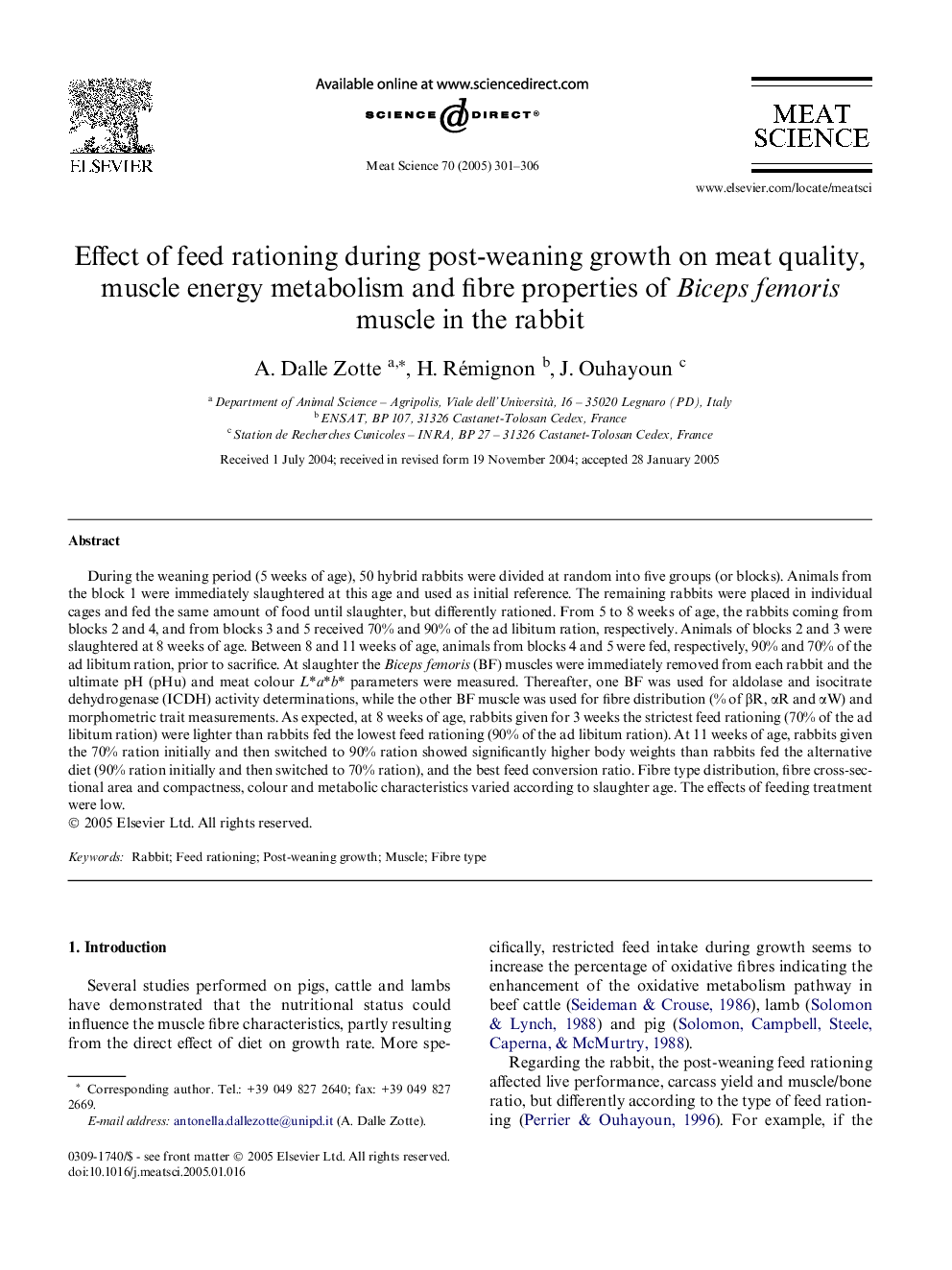| کد مقاله | کد نشریه | سال انتشار | مقاله انگلیسی | نسخه تمام متن |
|---|---|---|---|---|
| 8983683 | 1109721 | 2005 | 6 صفحه PDF | دانلود رایگان |
عنوان انگلیسی مقاله ISI
Effect of feed rationing during post-weaning growth on meat quality, muscle energy metabolism and fibre properties of Biceps femoris muscle in the rabbit
دانلود مقاله + سفارش ترجمه
دانلود مقاله ISI انگلیسی
رایگان برای ایرانیان
کلمات کلیدی
موضوعات مرتبط
علوم زیستی و بیوفناوری
علوم کشاورزی و بیولوژیک
دانش تغذیه
پیش نمایش صفحه اول مقاله

چکیده انگلیسی
During the weaning period (5 weeks of age), 50 hybrid rabbits were divided at random into five groups (or blocks). Animals from the block 1 were immediately slaughtered at this age and used as initial reference. The remaining rabbits were placed in individual cages and fed the same amount of food until slaughter, but differently rationed. From 5 to 8 weeks of age, the rabbits coming from blocks 2 and 4, and from blocks 3 and 5 received 70% and 90% of the ad libitum ration, respectively. Animals of blocks 2 and 3 were slaughtered at 8 weeks of age. Between 8 and 11 weeks of age, animals from blocks 4 and 5 were fed, respectively, 90% and 70% of the ad libitum ration, prior to sacrifice. At slaughter the Biceps femoris (BF) muscles were immediately removed from each rabbit and the ultimate pH (pHu) and meat colour L*a*b* parameters were measured. Thereafter, one BF was used for aldolase and isocitrate dehydrogenase (ICDH) activity determinations, while the other BF muscle was used for fibre distribution (% of βR, αR and αW) and morphometric trait measurements. As expected, at 8 weeks of age, rabbits given for 3 weeks the strictest feed rationing (70% of the ad libitum ration) were lighter than rabbits fed the lowest feed rationing (90% of the ad libitum ration). At 11 weeks of age, rabbits given the 70% ration initially and then switched to 90% ration showed significantly higher body weights than rabbits fed the alternative diet (90% ration initially and then switched to 70% ration), and the best feed conversion ratio. Fibre type distribution, fibre cross-sectional area and compactness, colour and metabolic characteristics varied according to slaughter age. The effects of feeding treatment were low.
ناشر
Database: Elsevier - ScienceDirect (ساینس دایرکت)
Journal: Meat Science - Volume 70, Issue 2, June 2005, Pages 301-306
Journal: Meat Science - Volume 70, Issue 2, June 2005, Pages 301-306
نویسندگان
A. Dalle Zotte, H. Rémignon, J. Ouhayoun,